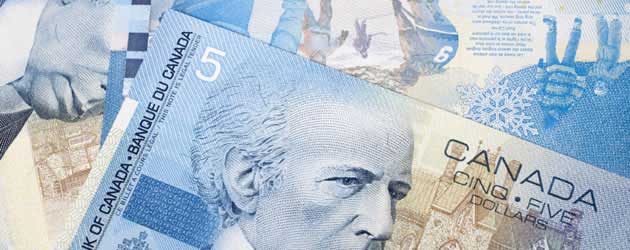
Yesterday the Canadian Dollar fell by 1.2 per cent against its US currency rival – its largest decline since the end of 2011. The ‘Loonie’s drop was largely the result of commodities like gold tumbling in response to disappointing Chinese GDP data.
The Canadian Dollar Exchange Rate was in the region of 0.9792 against the US Dollar as of 13:55 GMT
The expectation that the Bank of Canada will slash its economic growth forecasts when it meets this week also weighed heavily on the currency.
The odds of the BOC trimming its estimates for economic growth have increased in recent weeks as disappointing economic news, both at home and abroad, has indicated that recovery may still be a long way off.
After the ‘Loonie’ declined strategist David Doyle was quoted as saying: ‘I do think it’s the continued downdraft in commodities and not only does that affect demand for the Canadian Dollar in and of itself, but also probably has raised concerns about our domestic economy. If the Bank of Canada is confronted with a softness in commodity prices, if anything their statement and tone will probably shift to becoming more dovish, which I think would only pile on weakness to the CAD at this point.’
During local trade the Canadian Dollar was trading in the region of 97.50 US cents, but some currency strategists believe that further weakness is on the way. Shaun Osborne, of Toronto-Dominion Bank, commented: ‘I think we’re going to push a little lower. A lot of pressure on commodities is spilling over to the Canadian Dollar; Canada is perhaps along for a bit of a ride. The outlook for slower growth in China suggests we’re going to see some more pressure on commodities.’
However, before the release of US inflation data the ‘Loonie’ experienced a modest rebound as gold gained, although the Canadian Dollar continued to lose ground against fellow commodity-driven currencies the ‘Aussie’ and ‘Kiwi’.
Additional movement can be expected to follow the release of several pieces of Canadian and US data.
Firstly, Canadian manufacturing sales rose by more-than-anticipated last month, climbing to a seasonally adjusted 2.60 per cent from minus 0.6 per cent in February.
Meanwhile, according to the Labor Department the US Consumer Price Index fell by 0.2 per cent in March rather than rising 0.2 per cent as economists expected.
Core CPI (which excludes energy and fuel costs) rose by 0.1 per cent last month. Economists had predicted that it would advance by 0.2 per cent.
A separate piece of positive US data followed as US Housing starts jumped by 7 per cent in March to an annual rate of 1.04 million – the most since mid-2008.
These-better-than-expected results could boost the ‘Loonie’ in the hours ahead.

Comments are closed.